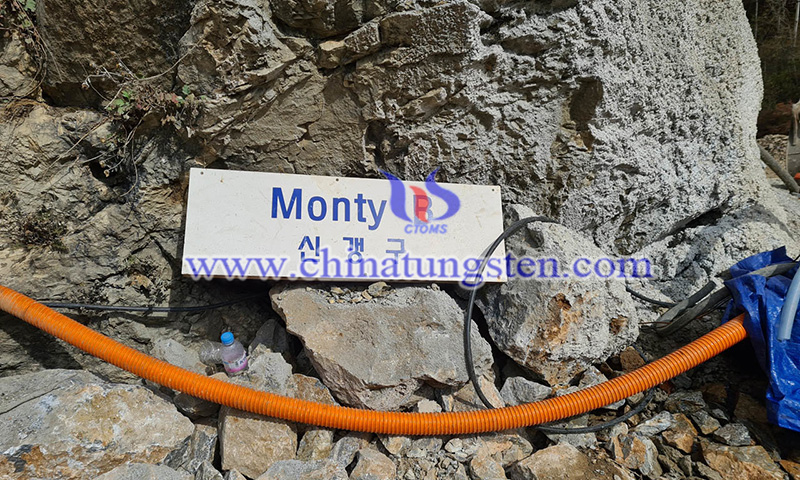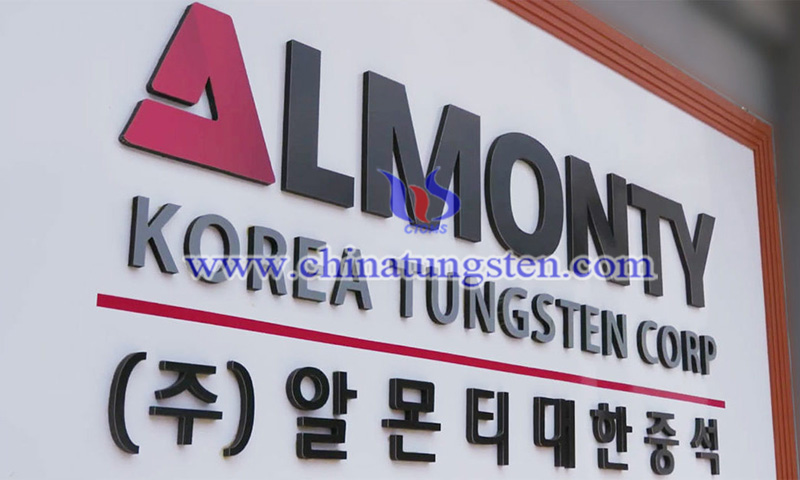Almonty Builds Downstream Processing Plant for Tungsten Oxide Nanoparticles
- Details
- Category: Tungsten's News
- Published on Sunday, 03 April 2022 13:21
Almonty Industries announced that it is building a vertically integrated downstream processing plant for tungsten oxide nanoparticles (Sangdong Downstream Expansion Project) to supply the battery anode manufacturing industry in Korea and has signed a Letter of Intent (LOI) with the company's existing debt provider, KfW IPEX-Bank, to finance the Sangdong Downstream Expansion Project.
“The battery and semiconductor industries offer tremendous additional growth potential for the tungsten market, particularly for Korea," said Lewis Black, Chairman, President, and Chief Executive Officer of the company. “The company is excited to investigate this critical growth to supply the green energy revolution, which will add additional value to Sangdong Tungsten and our company.”

“At the same time, we are pleased to have the continued support of KfW IPEX-Bank, who has signed a letter of intent to provide a further $50 million in debt financing for the Sangdong downstream expansion project," he added.
Demand for tungsten has been growing due to the increasing demand for semiconductors in the automotive, industrial, and consumer electronics industries, driven by the trend toward remote working and learning and the digitization of business. The growing electric vehicle market has led to the development of new battery technologies, such as niobium oxide (NWO) batteries, which use NWO anodes based on tungsten oxide nanopowder for improved lifecycle, cost efficiency, and fast charging technology.
Almonty has learned that the use of tungsten oxide nanopowder increases the safety features of batteries due to its high intrinsic density and rich framework diversity as well as heat resistance. The battery industry has also implemented tungsten oxide directly into its anode and cathode formulations.
South Korea is the world's largest per capita consumer of tungsten, but it imports 94.7% of its tungsten oxide from China. In addition, Korea consumes about 40% of the world's tungsten hexafluoride gas (WF6), which is used in the production of semiconductors and is based on tungsten oxide nanoparticles that the company is investigating.
Given the continued growth in demand for tungsten in South Korea and the fact that Almonty is the only tungsten miner in the country, the company has been in constant dialogue with the South Korean government and has maintained a close relationship with them. In order to get more out of the Sangdong tungsten mine, the company has undertaken a high-level investigation of a vertically integrated tungsten oxide nano downstream processing plant to be located at the Sangdong tungsten site.
The preliminary survey report has now been completed and discussions are underway with the Korean government and key Korean consumers on how best to expedite this program. The program will run concurrently with the ongoing construction and reopening of the Sangdong mine.

Once this tungsten project is clearly defined and started, the company and the Korean government will develop a similar downstream domestic consumption plan for the company's molybdenum project, also located at the Sangdong mine, which is now the world's fourth-largest importer of molybdenum.
Toronto, Canada-based Almonty Industries' principal activities are the mining, processing, and transportation of tungsten concentrates from the Los Santos mine in western Spain and the Panasqueira mine in Portugal, as well as the development of the Sangdong tungsten mine in South Korea and the development of the Valtreixal tin/tungsten project in northwestern Spain.
The Sandong Mine, historically one of the largest tungsten mines in the world and one of the few long-lived, high-grade tungsten mines outside of China, was acquired in September 2015 through the acquisition of a 100% interest in Woulfe Mining Corp. Almonty owns 100% of the Valtreixal Tin-Tungsten Project in northwest Spain.
- Tungsten Manufacturer & Supplier, Chinatungsten Online: www.chinatungsten.com
- Tungsten News & Prices of China Tungsten Industry Association: www.ctia.com.cn
- Molybdenum News & Price: news.molybdenum.com.cn
- Tel.: 86 592 5129696; Fax: 86 592 5129797; Email: sales@chinatungsten.com



 sales@chinatungsten.com
sales@chinatungsten.com